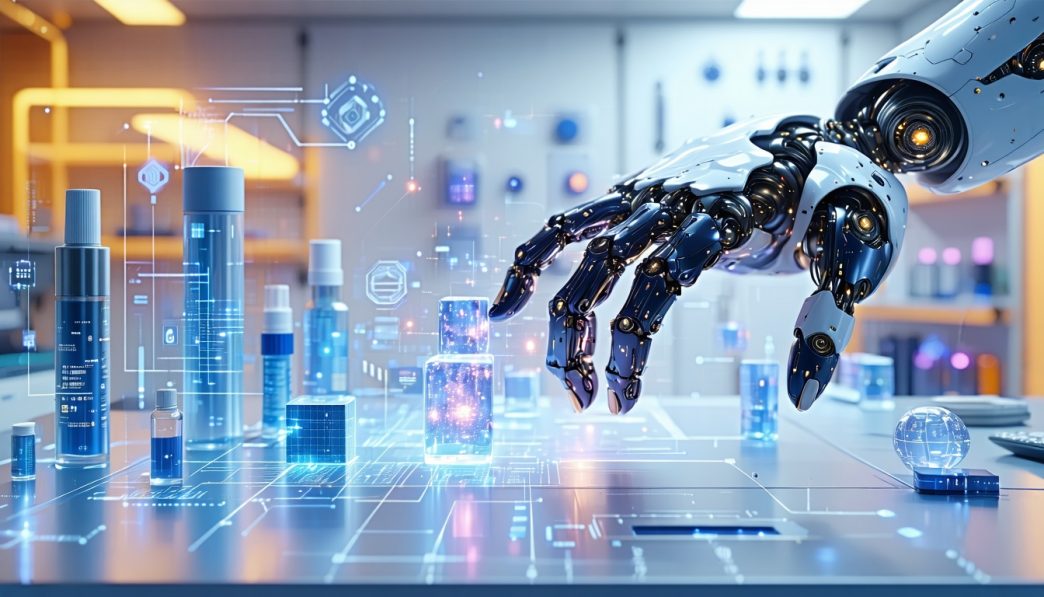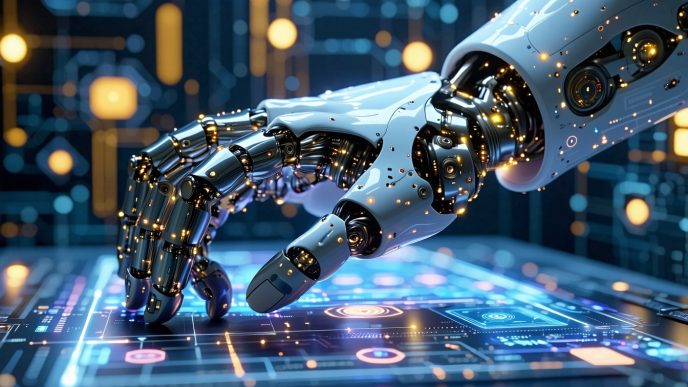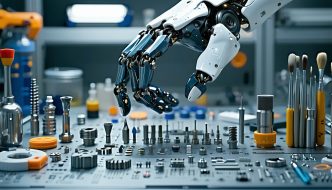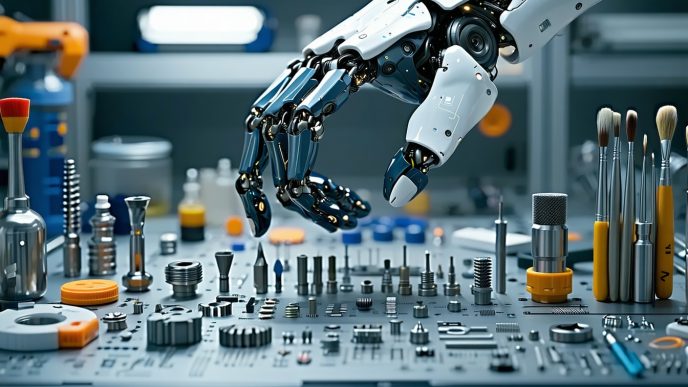The Evolution of Robotic Manipulation
The field of robotic manipulation has witnessed significant changes since its inception. From basic mechanical arms to advanced systems capable of sophisticated tasks, the evolution highlights the progress made in how robots interact with objects.
Robotic manipulation: Past to Present
Initially, robotic manipulation systems were limited primarily to industrial applications. Early robots were designed using simple operational principles and had minimal flexibility. These robots could only perform repetitive tasks in controlled environments, primarily in manufacturing settings.
Over the years, advancements in technology have led to the development of more versatile robotic systems. These systems can now function in dynamic environments and are capable of performing intricate operations. The table below summarizes key milestones in robotic manipulation history:
| Year | Milestone | Description |
|---|---|---|
| 1950s | First Industrial Robot | The introduction of the Unimate marked the beginning of industrial automation. |
| 1980s | Simple Pattern Recognition | Robots began to utilize basic pattern recognition for manipulating objects. |
| 2000s | Enhanced Mobility and Flexibility | Robots could navigate various terrains and manage simple objects. |
| 2010s | Introduction of AI | Robots started using artificial intelligence to adapt their manipulation techniques. |
| 2020s | Advanced Dexterity | Contemporary robots exhibit human-like dexterity and fine motor skills using modern gripping technologies. |
Advancements in Robotic Gripping Technologies
Modern advancements have revolutionized gripping technologies, allowing robots to perform tasks with enhanced precision. Traditional grip designs have evolved into more sophisticated systems that simulate the flexibility of human hands. The use of advanced materials and innovative designs has led to the creation of dexterous robot hands capable of manipulating a variety of objects.
A few critical advancements include:
- Soft Robotics: These systems utilize flexible materials, allowing robots to grip delicate objects without damaging them.
- Adaptive Gripping Systems: Robots can now adjust their grip based on the shape and weight of the object. More about this can be found in our article on adaptive gripping in robots.
- Integration of Sensors: The incorporation of tactile sensors enhances a robot’s ability to gauge gripping strength and adjust accordingly. For more insights, refer to our article on tactile sensors in robot hands.
In summary, the future of robotic manipulation is shaped by innovations that allow increased dexterity and functionality, making robots more capable of handling diverse tasks. The ongoing research continues to push the boundaries of what robots can accomplish in terms of gripping and manipulation, opening the door for exciting applications in various industries and everyday life. For further exploration of this field, consider examining articles on robot manipulation tasks and robot gripping and manipulation.
Understanding Robotic Gripping Mechanisms
Robotic gripping mechanisms are crucial for accomplishing tasks that require precise handling of objects. Various designs and technologies enable robots to grip, manipulate, and perform complex tasks, highlighting the future of robotic manipulation.
Types of Gripping Mechanisms
Several types of gripping mechanisms have been developed to suit different applications. Here is a brief overview of common types:
| Type of Gripper | Description | Suitable Applications |
|---|---|---|
| Parallel Grippers | Two fingers move in parallel to grasp objects. | Handling flat objects and boxes |
| Angular Grippers | Fingers pivot at the base to open and close around objects. | Grasping irregular shapes |
| Soft Grippers | Made from flexible materials, they conform to the shape of the item. | Delicate objects, food items |
| Magnetic Grippers | Use magnets to hold ferromagnetic objects securely. | Handling metal parts |
| Vacuum Grippers | Utilize suction to pick up flat or non-porous items. | Lifting glass sheets, packages |
Different tasks require different gripper types, which can be selected based on the object’s characteristics and required manipulation. For instance, the adaptability of soft grippers allows them to handle delicate items without causing damage.
The Role of Sensors in Robotic Gripping
Sensors play a vital role in enhancing a robot’s ability to grip and manipulate objects effectively. They provide feedback that allows robots to adjust their grip or even switch gripping strategies in real time. Here are key types of sensors commonly integrated into robotic gripping systems:
| Sensor Type | Function | Benefits |
|---|---|---|
| Tactile Sensors | Detect pressure and texture, providing feedback on grip strength and object characteristics. | Enhances the ability to handle fragile objects, as discussed in our article on tactile sensors in robot hands. |
| Proximity Sensors | Detect the presence of an object before gripping, ensuring proper alignment for successful manipulation. | Prevents errors during grasping |
| Force Sensors | Measure the amount of force being applied, allowing for adjustments based on object weight and sensitivity. | Can prevent damage to both object and gripper by controlling gripping strength as detailed in our article on gripping strength in robots. |
| Vision Sensors | Utilize cameras to analyze objects visually, enhancing robots’ ability to identify and adapt to different shapes and colors. | Improves accuracy in object recognition |
By integrating these sensors, the capabilities of robotic gripping systems are greatly enhanced. The information collected from these sensors allows robots to execute robot manipulation tasks more accurately and adaptively. The innovations in sensor technologies continue to play a significant role in reaching higher levels of dexterity in robotic systems, aligning with the excitement surrounding the future of robotic manipulation.
Challenges in Object Manipulation
As robots evolve, they face numerous challenges in achieving effective object manipulation, specifically concerning fine motor skills and handling complex shapes and textures.
Fine Motor Skills in Robotics
Fine motor skills are vital for precise movements and actions. In robotics, these skills are crucial for tasks such as picking up small items, threading a needle, or performing delicate assembly operations. Most robots lack the nuanced dexterity found in human hands, which limits their effectiveness in performing intricate tasks.
| Gripping Type | Typical Precision Level |
|---|---|
| General Grippers | Low to Medium |
| Dexterous Robot Hands | High |
| Vacuum Grippers | Medium |
Developing robotic systems that can replicate the fine motor skills of humans involves advanced engineering and sophisticated programming. Innovations such as dexterous robot hands are being implemented to enhance a robot’s ability to perform detailed actions.
Handling Complex Shapes and Textures
Robots are often challenged when it comes to manipulating objects with varying shapes, sizes, and textures. Unlike humans, who can easily adapt their grip and approach based on the object’s characteristics, robots may struggle with unfamiliar items. This limitation impacts their ability in numerous applications, including packing, sorting, and assembling items in varied environments.
| Object Type | Complexity Level | Typical Handling Difficulty |
|---|---|---|
| Simple Shapes (e.g., cubes) | Low | Easy |
| Irregular Shapes (e.g., fruits) | Medium | Moderate |
| Textured Surfaces (e.g., fabrics) | High | High |
To enhance their capabilities, robots are increasingly incorporating advanced robot grasping technology. This includes the use of tactile sensors in robot hands to provide feedback about the object’s texture and shape, allowing for better adaptation during manipulation.
Addressing these challenges is vital for advancing the future of robotic manipulation. By improving fine motor skills and enabling robots to handle a wider variety of shapes and textures, robotics can reach new heights of efficiency and versatility.
Cutting-Edge Technologies
The future of robotic manipulation is greatly influenced by advances in technology, especially artificial intelligence (AI) and machine learning. These innovations empower robots to grip, manipulate, and perform tasks with increased efficiency and precision.
Artificial Intelligence in Robotic Manipulation
Artificial intelligence plays a crucial role in improving how robots interact with different objects. AI enables robots to analyze their environment and make real-time decisions based on sensory feedback. This capability allows them to adapt their gripping techniques and recognize when to apply different levels of force.
AI-driven robotic systems can utilize computer vision to identify objects and understand their dimensions and positions. By analyzing visual data, these robots can determine the best approach for grasping, even in cluttered or unpredictable environments. Advanced algorithms help robots refine their movements, enhancing their ability to complete robot manipulation tasks that require precision and adaptability.
| AI Capability | Description |
|---|---|
| Object Recognition | Identifying and classifying objects in real-time. |
| Decision Making | Analyzing data to choose optimal actions while handling objects. |
| Adaptive Learning | Improving performance over time through experience and feedback. |
Machine Learning for Adaptive Gripping
Machine learning complements AI by allowing robots to learn from previous experiences. Through repeated interactions with various objects, robots can adjust their grasping techniques based on what has worked best in past attempts. This leads to improved performance when handling items with complex shapes or delicate textures.
Adaptive gripping is key in robotics. It enables machines to modify their grip based on feedback from sensors. For instance, if a robot detects that it is gripping an object too tightly, machine learning algorithms can instruct it to loosen its grip, preventing damage. This dynamic adjustment enhances the gripping strength in robots and their overall efficiency.
| Machine Learning Function | Purpose |
|---|---|
| Performance Tracking | Monitoring effectiveness of various gripping techniques. |
| Feedback Integration | Adjusting grip strength and technique in response to sensor data. |
| Continuous Improvement | Updating methods based on new challenges and successes. |
Robots equipped with these technologies can execute tasks that were once difficult, if not impossible, for machines. As development continues, the integration of AI and machine learning will further revolutionize the capabilities of robotic systems, particularly in the realms of robot gripping and manipulation.
The potential of these advancements extends to areas such as dexterous robot hands and adaptive gripping in robots, showcasing the exciting future awaiting robotic manipulation.
Future Prospects
As technology continues to advance, the future of robotic manipulation promises enhanced capabilities, improved collaboration, and a wide range of applications across various fields.
Enhanced Dexterity in Robotics
Future robots are expected to exhibit enhanced dexterity, allowing them to perform intricate tasks that closely mimic human manipulation. This advancement involves the development of more sophisticated gripping mechanisms and control systems that integrate tactile feedback. Dexterous robot hands, equipped with multiple joints and sensors, will enable robots to grasp and manipulate objects of varying shapes and sizes with more precision.
| Feature | Traditional Robots | Future Dexterous Robots |
|---|---|---|
| Number of Degrees of Freedom | 3-5 | 10+ |
| Grip Customization | Limited | Highly customizable |
| Sensory Feedback | Minimal | Advanced tactile sensors |
For more information on these developments, explore our article on dexterous robot hands.
Collaborative Robots in Object Handling
Collaborative robots, or cobots, will play a significant role in enhancing robotic manipulation. These robots are designed to work alongside humans, sharing workspaces and tasks. Future advancements are aimed at increasing the safety and efficiency of these interactions. By leveraging sophisticated machine learning algorithms, collaborative robots will adapt to their environment, learning how to handle objects safely and effectively.
The integration of tactile sensors will allow cobots to assess the weight and fragility of objects, significantly improving their handling capabilities. This innovation will enable them to take on a more active role in various industries, including manufacturing, healthcare, and logistics. For insights on related technologies, see our article on tactile sensors in robot hands.
Potential Applications of Advanced Robotic Manipulation Techniques
The advancements in robotic manipulation will lead to a vast array of potential applications. Some notable areas include:
| Application | Description |
|---|---|
| Elderly Care | Robots will assist with daily tasks, improving the quality of life for seniors. |
| Manufacturing | Enhanced manipulation will lead to more efficient production lines with less human intervention. |
| Disaster Response | Robots can navigate complex environments to retrieve objects and deliver supplies in emergencies. |
| Robotics in Surgery | Precision manipulation will advance surgical robots, allowing for minimally invasive procedures. |
| Agricultural Automation | Robots will handle crops delicately, improving the harvesting process while reducing damage. |
For further exploration, refer to our articles on robot manipulation tasks and robot tool usage.
The future of robotic manipulation holds great promise for revolutionizing how robots interact with the world. Advancements in technology, combined with an emphasis on adaptability and safety, will enable robots to perform complex tasks with greater efficiency and precision.















